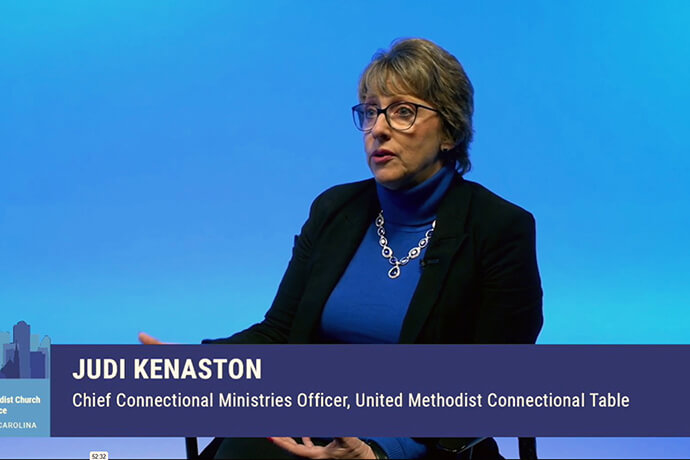
As The United Methodist Church approaches a major legislative gathering that will determine the future of the denomination, Judi Kenaston, chief connectional ministries officer for the Connectional Table, looks at various plans for regionalization and how the submitted budget is prepared.
Kenaston spoke with UM News as part of a video series featuring different perspectives of church leaders on legislation to be considered by General Conference delegates.
Watch videos
‘Regionalization is not a new concept for our church.’
Kenaston discusses the history of proposals for a U.S. central conference and analyzes the regionalization proposal to be considered by General Conference delegates in Charlotte.
There are several regionalization plans headed to General Conference. Kenaston discusses the differences between them.
Kenaston addresses some misconceptions about regionalization and clarifies what it does and does not propose.
What if regionalization passes?
Kenaston outlines the next steps that would follow passage of a regionalization plan by General Conference delegates.
What if regionalization doesn’t pass?
It’s not as simple as “pass” or “not pass.” There are options to adopt or adapt certain portions of the legislation and not others.
Though regionalization is a main focus of the Connectional Table, Kenaston said they are also looking to reorganize their board to be smaller but more globally diverse.
Connectional Table’s budget role
Kenaston discusses how the Connectional Table works with GCFA to submit a budget for General Conference approval and allocate World Service funds.
‘They're doing a lot with five loaves and two fishes.’
As the general boards and agencies face significant budget cuts in the coming quadrennium, Kenaston said the Connectional Table and GCFA are looking at ways to “do the least damage,” acknowledging that agencies have already been doing a lot of work with smaller budgets for years.
